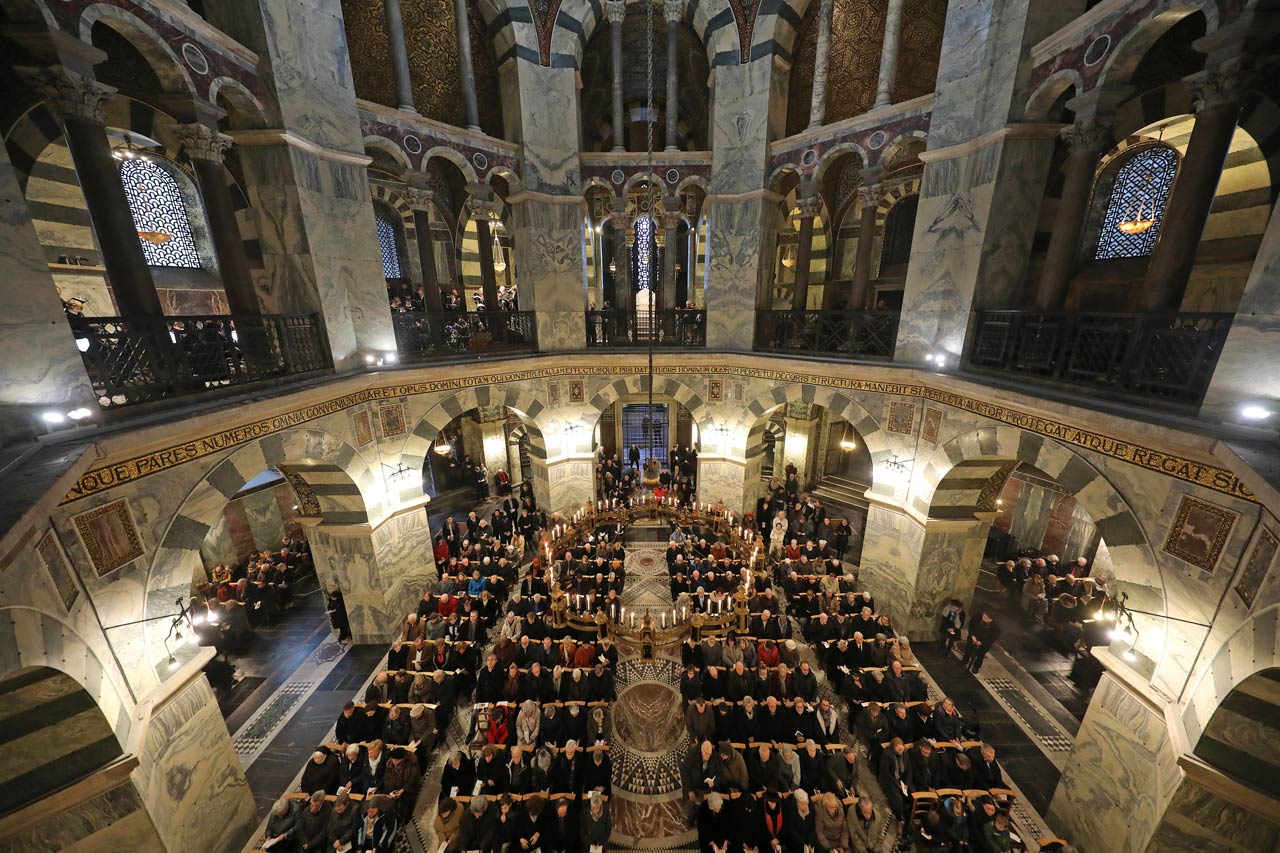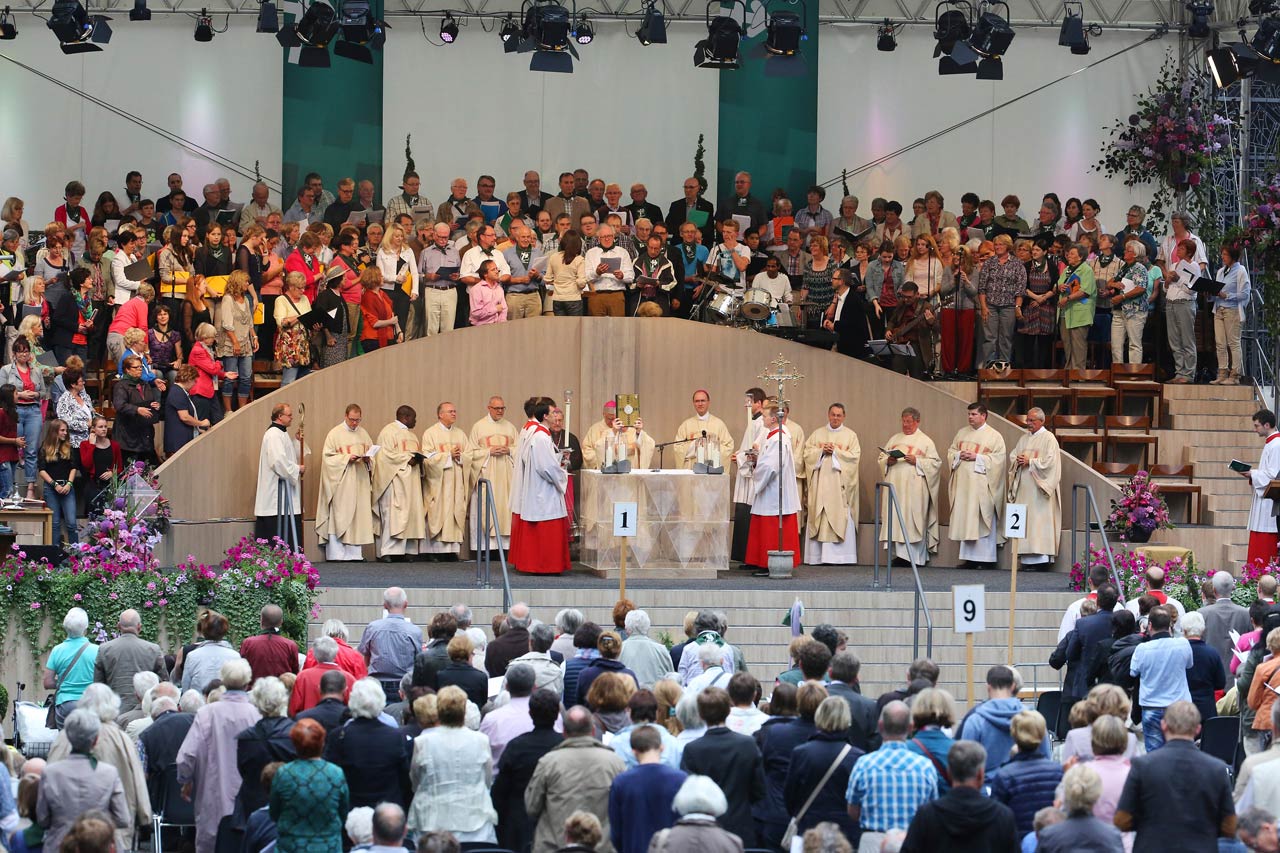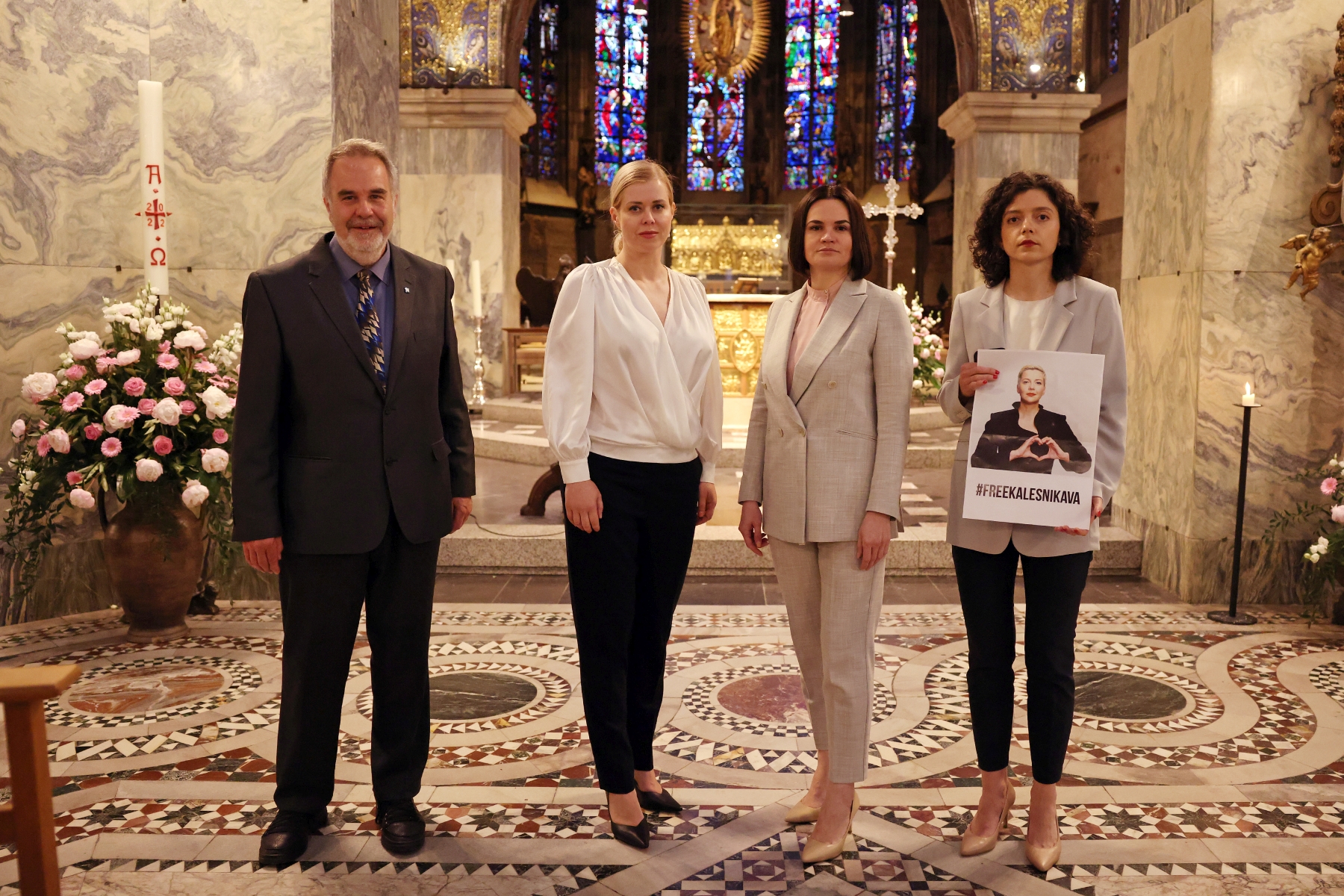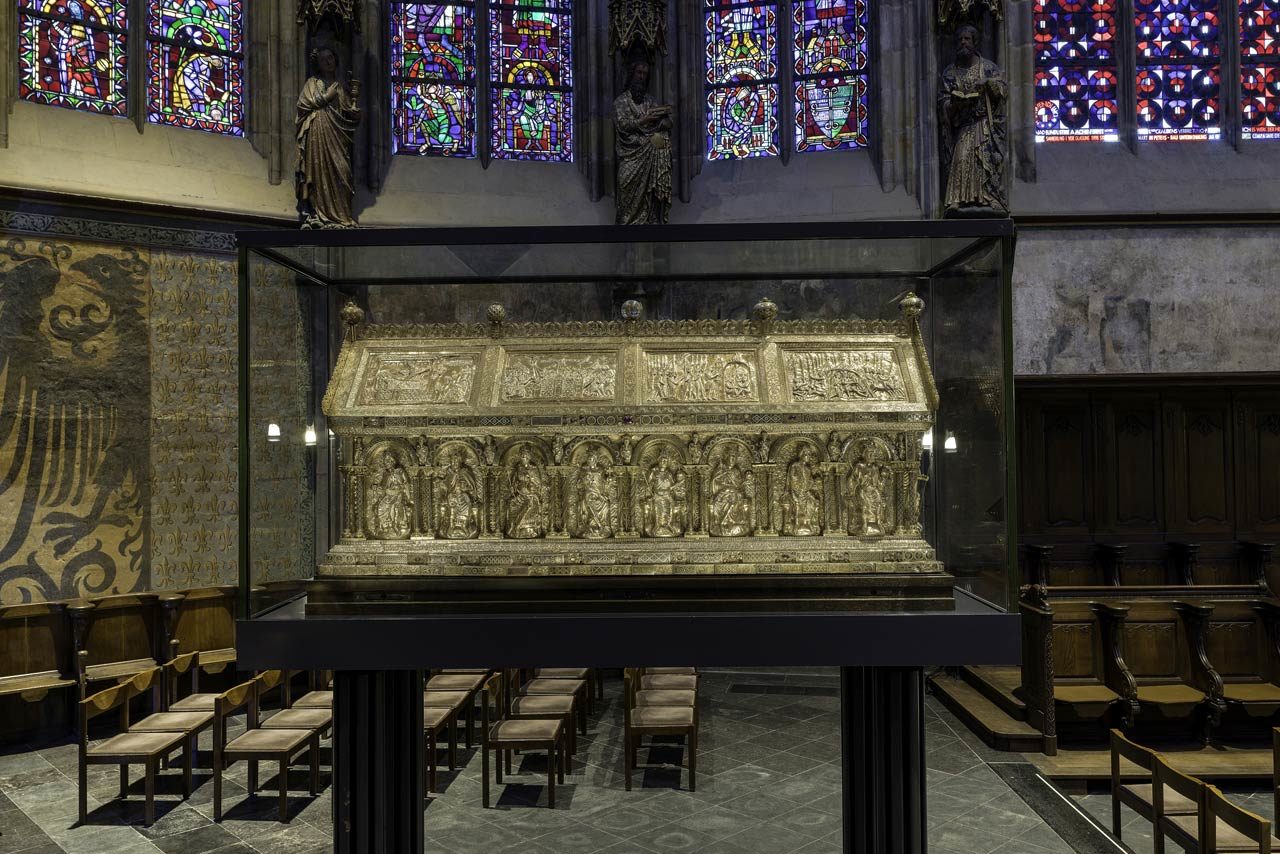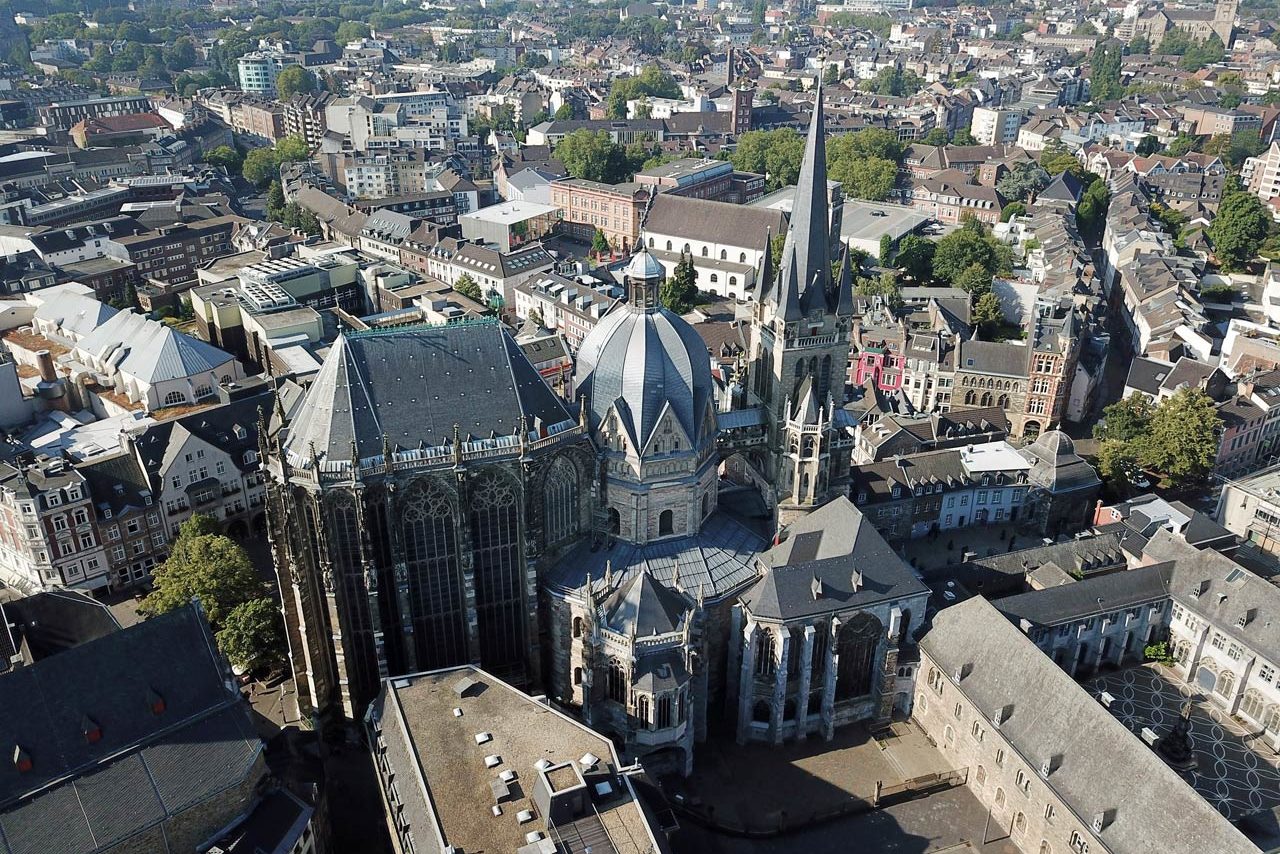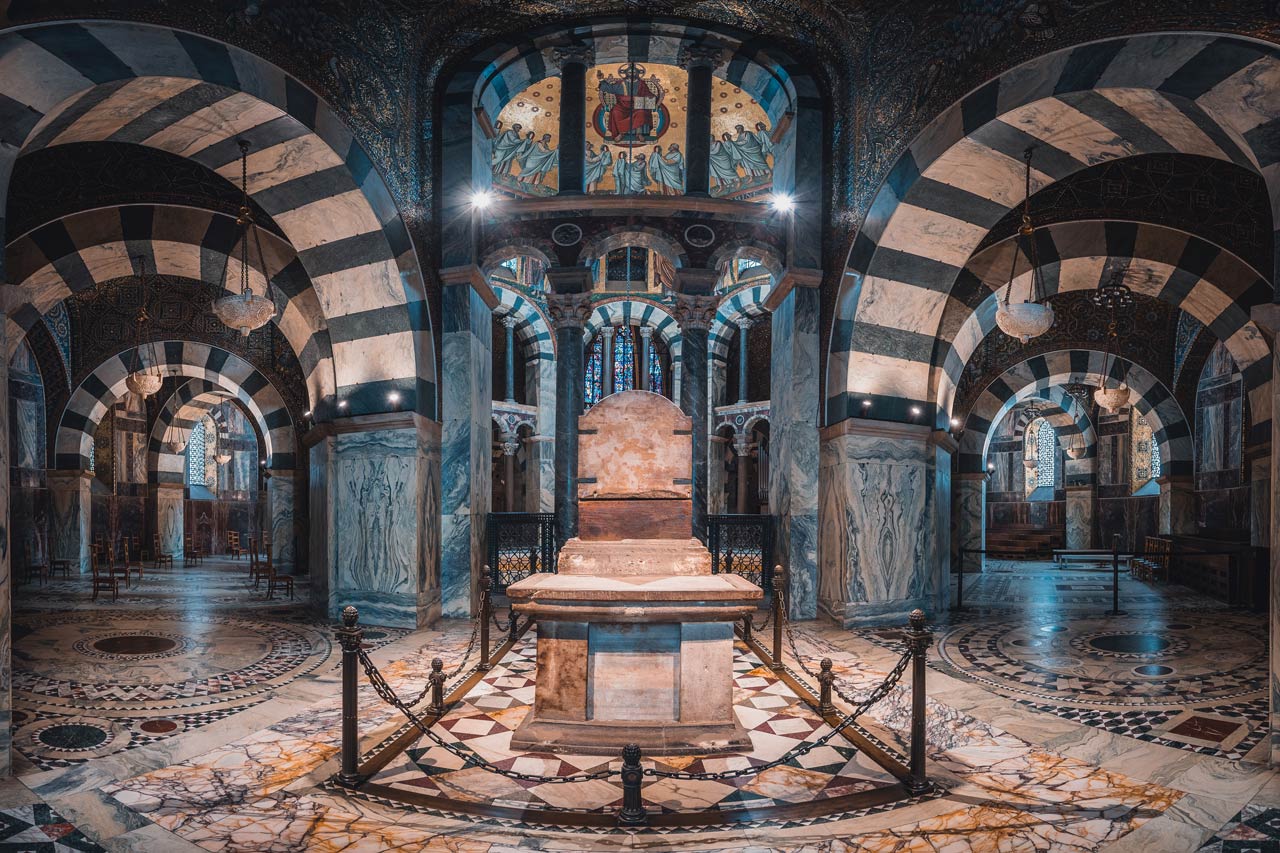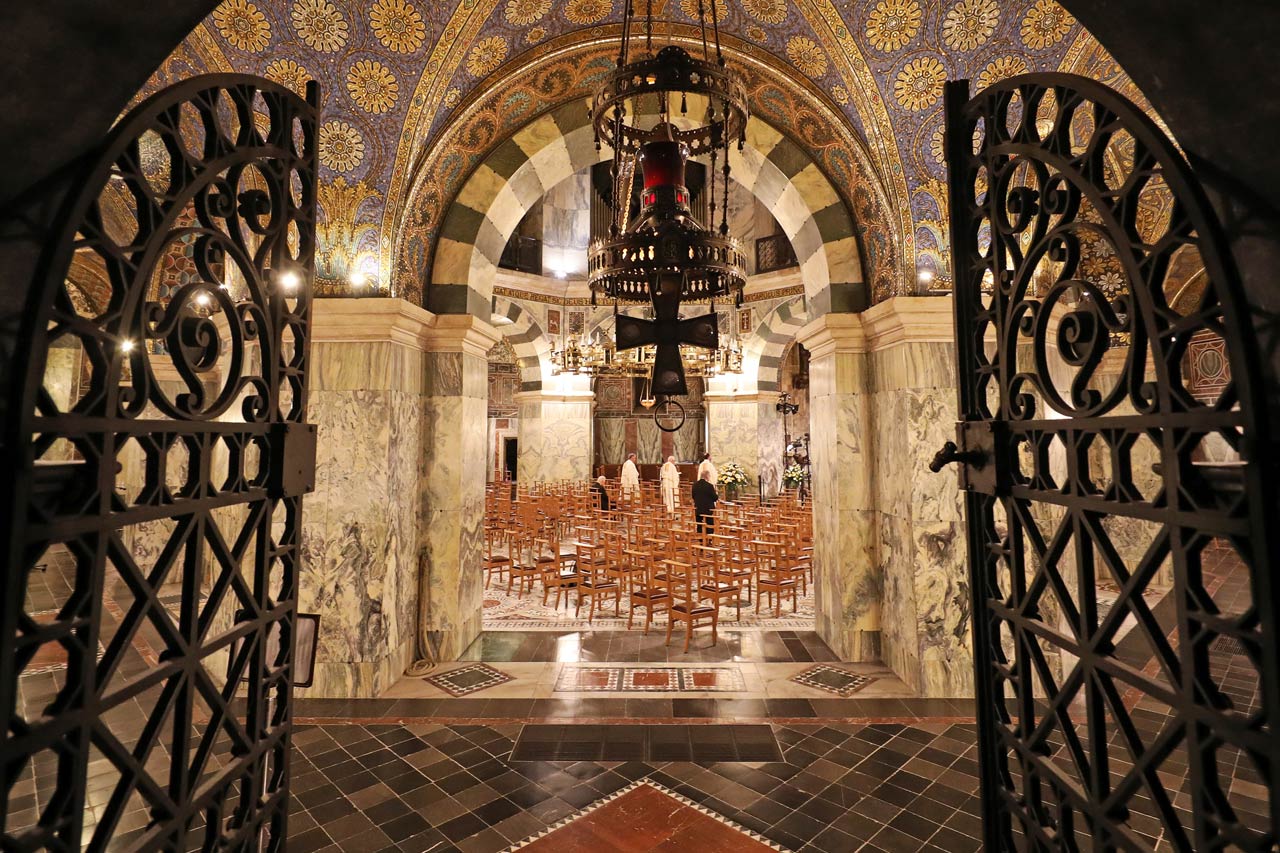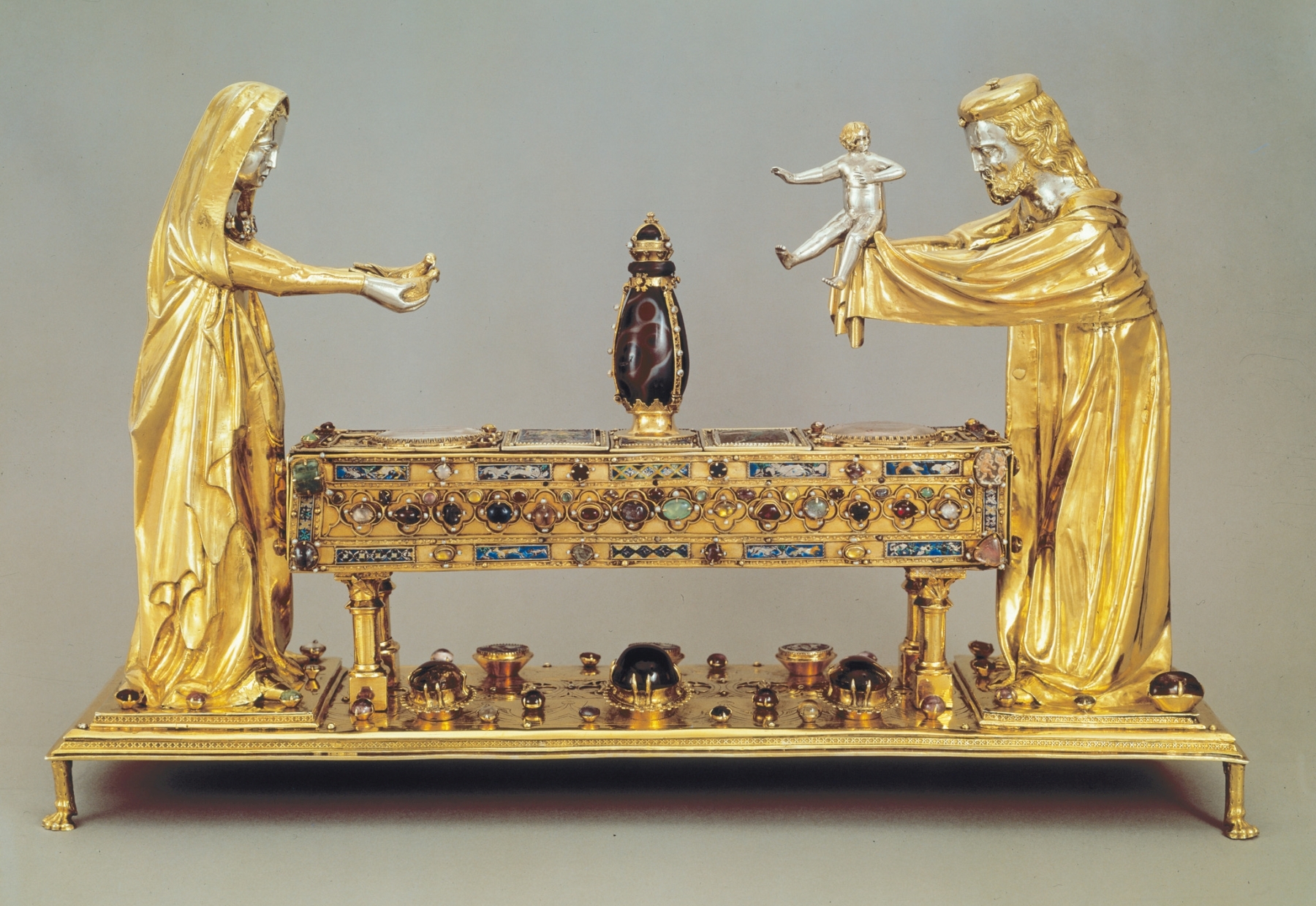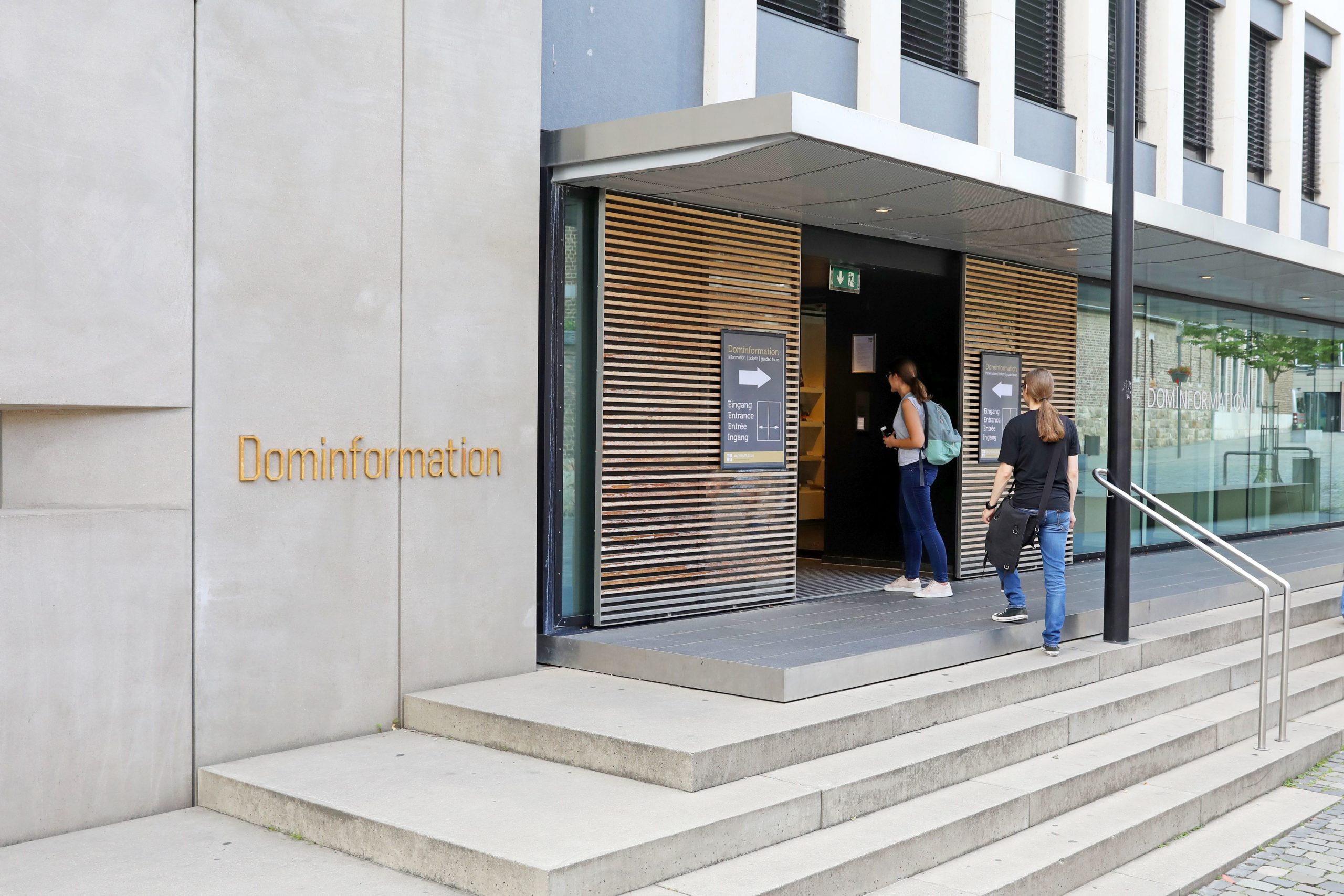An “almost perfect” digital twin of Aachen Cathedral
Architecture students from three European universities have jointly created a high-precision laser scan of the UNESCO World Heritage Site
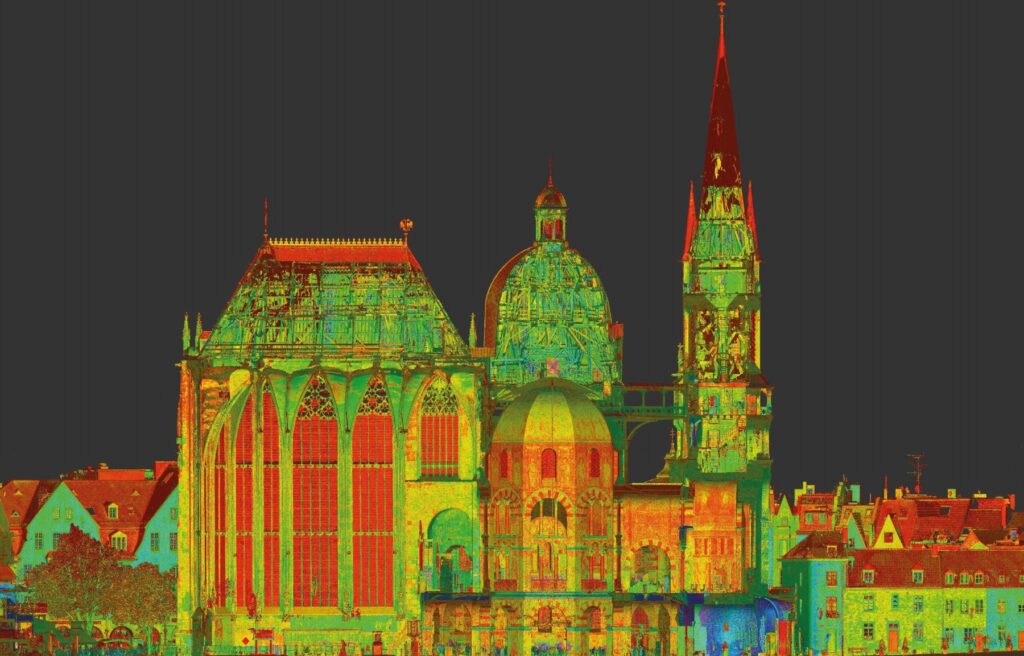
As part of an international collaboration, the Chair of Architectural History at RWTH Aachen University has been working with the Sapienza Università di Roma and the Scott Sutherland School of Architecture at Robert Gordon University in Aberdeen since last autumn to create a complete laser scan of Aachen Cathedral.
The aim of the ambitious project was to use high-precision laser scanning technology to provide detailed documentation of the building in its current form and its furnishings. The path to the finished result, which the students and their supervising professors handed over to the Dombauhütte yesterday, was characterised by many successive work processes: they ranged from laser scanning on site to the generation of a high-resolution point cloud and the modelling of textured models.
“The level of detail is incredible,” says cathedral architect Dr Jan Richarz. “The results provide far-reaching insights into the building’s structure as well as knowledge about its structural properties, which will help us with further conservation work.”
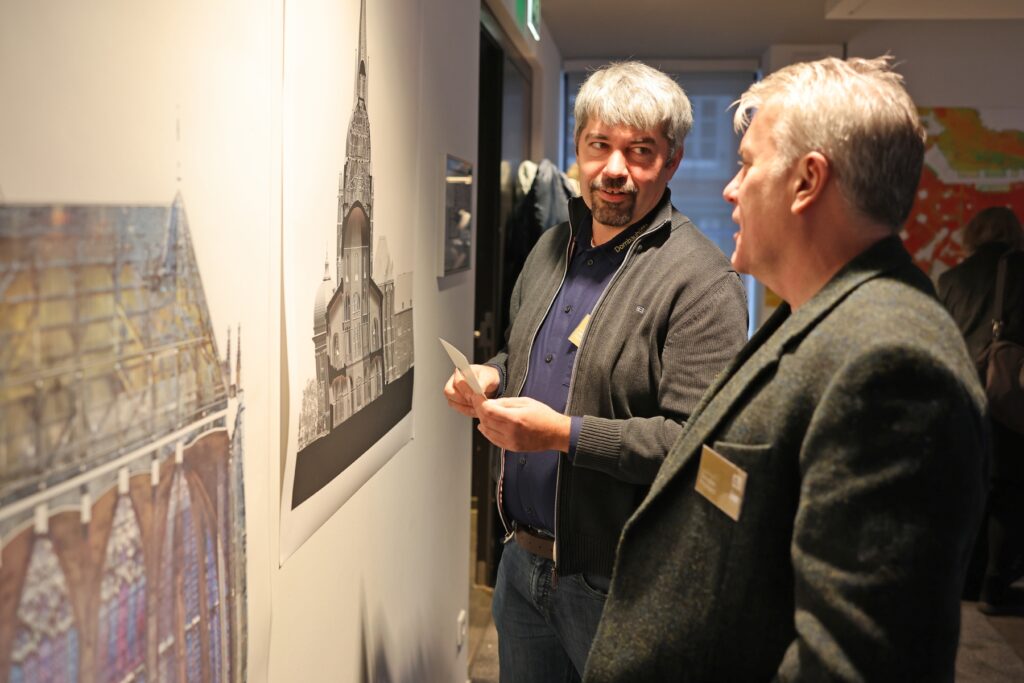
Prof Carlo Bianchini also sees the laser scan as a key component for the preservation of the “anything but ordinary” Aachen Cathedral, an object that has been studied and researched for centuries. Utilising the timeless and highly precise data is a unique opportunity to discover new things. It could help future researchers and construction managers to develop strategic visions for preservation, repair and reconstruction.
Professor Douglas Pritchard, who was already involved in the scan of Cologne Cathedral and is considered one of the leading experts in this field, really enjoyed the project. “The data can be used in a variety of ways and has become so precise that an almost perfect digital twin of the cathedral has been created. Against the backdrop of impending threats from weather, climate change and tourist visitor flows, every world heritage site should be so well documented.”
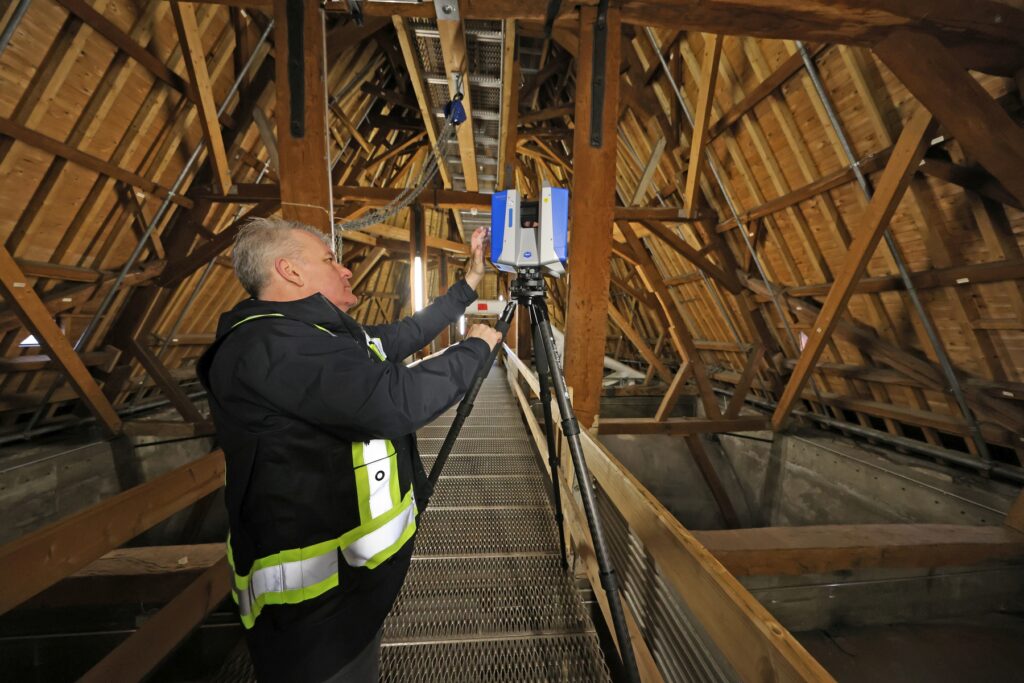
The cooperation was initiated by Yannick Ley from the Chair of Architectural History at RWTH. The doctoral student had attended a seminar with Professor Carlo Bianchini during an Erasmus exchange in Rome – and also met his colleague Douglas Pritchard at a guest lecture. Ley was in charge of coordinating the project and is now proud of what they have achieved together. “We have made a true-to-scale survey of the cathedral, which shows the condition of the building in 2022 and will serve architectural history research in the future.”
